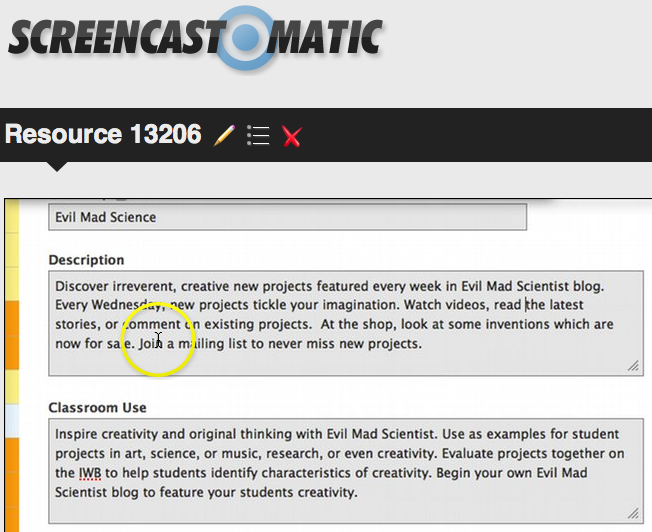Technology aversion: The all mac and cheese diet
It’s not about digital immigrants vs digital natives. It’s about willingness to taste something new.
Five year olds don’t like to try new foods. Some are unwilling to touch a food simply because it is green or “looks funny.” If it does not look like macaroni and/or cheese, the five year old mouth clamps closed. Fortunately, with a little coaxing, that stubborn little macaroni man will grow out of this phase.
Adults who are taste-averse about new applications of technology are worse than five year old macaroni mavens. Yesterday I heard a tale of unwilling technology “taste testers” in a highly respected university setting. This university was asked to evaluate various curricula for use in a certain type of early childhood program. As professionals, their taste testing is more than personal preference. It is a formal assessment of the quality of the curriculum “meals” being offered.
This group of curriculum food critics notified the creator of one curriculum that they simply will not “taste” that curriculum because it is not available entirely in a print format. The curriculum, in fact, is much more than a print document. It is an interactive tool that uses ongoing formative assessments of student progress to recommend the next curriculum objectives for EACH child and simultaneously offers several possible activities that can be used to help that child (or a class) achieve the next developmentally appropriate objective. Why isn’t it in print? Because it is interactive, data driven, and dynamic. You simply can’t make a print curriculum “book” that flips to the correct page based on what a child did today in class. This curriculum is steeped in technology to make learning work. Imagine that.
But the highly respected five year olds won’t taste it because it looks funny and is not printed macaroni and cheese.
I have no idea who has given the five year olds permission to run the university evaluation project, but I hope someone will eventually help them outgrow their five-year-old, finnicky attitude. At this rate, they would have us teaching our children to do nothing but string macaroni bracelets well into the 21st century.
Please pardon this bit of a rant. Some weeks end on a sticky note.




 I learn from what I see. Yes, there are a few students who throw a few text boxes onto a computer screen like fill-in-the-blanks on a worksheet and call it an infographic. But so many more have made steady progress from a few images on a rectangle (their first attempt) to a carefully color coordinated arrangement of words, images, and lines/arrows that explain photosynthesis or DNA replication (attempts 2 and 3). As a set of fresh eyes, looking from a distance instead of from the teacher’s desk in the bio lab, I see understanding. I see science concepts I had long forgotten, now freshly explained to me by a 9th grader. I make comments on their wiki because they need to know that their work makes sense. I also make suggestions (no teacher can ever resist a chance!).
I learn from what I see. Yes, there are a few students who throw a few text boxes onto a computer screen like fill-in-the-blanks on a worksheet and call it an infographic. But so many more have made steady progress from a few images on a rectangle (their first attempt) to a carefully color coordinated arrangement of words, images, and lines/arrows that explain photosynthesis or DNA replication (attempts 2 and 3). As a set of fresh eyes, looking from a distance instead of from the teacher’s desk in the bio lab, I see understanding. I see science concepts I had long forgotten, now freshly explained to me by a 9th grader. I make comments on their wiki because they need to know that their work makes sense. I also make suggestions (no teacher can ever resist a chance!). I email their teacher to ask– does she have any idea how GOOD her students’ work really is? Can she reflect from afar to gain perspective? Or does February have her so earthbound that she cannot see the big picture from above?
I email their teacher to ask– does she have any idea how GOOD her students’ work really is? Can she reflect from afar to gain perspective? Or does February have her so earthbound that she cannot see the big picture from above?



 Sometimes the lyrics of a song validate my thoughts and provide the seams, stitching clarity. Sometimes it is the words of a character in a novel. More often today, it is a someone’s blog post that starts the sewing machine of my mind. But I know to look for and relish these moments as Joys amid the din. I know to walk away from the screen and take a walk with the sounds of the lake or perhaps an iPod.
Sometimes the lyrics of a song validate my thoughts and provide the seams, stitching clarity. Sometimes it is the words of a character in a novel. More often today, it is a someone’s blog post that starts the sewing machine of my mind. But I know to look for and relish these moments as Joys amid the din. I know to walk away from the screen and take a walk with the sounds of the lake or perhaps an iPod.

